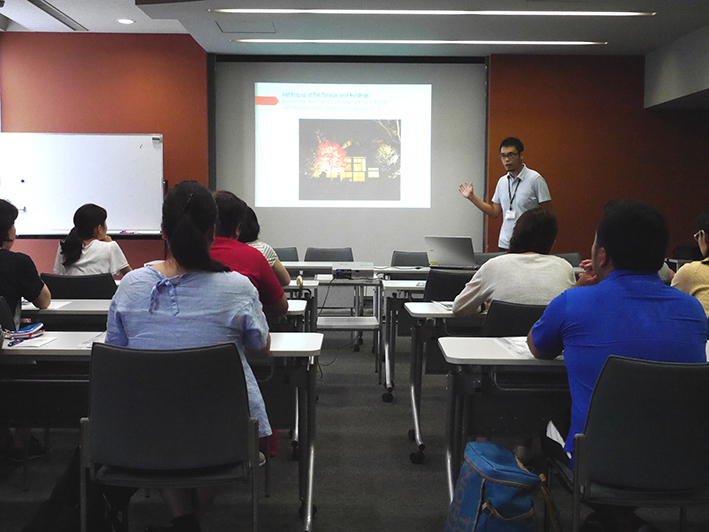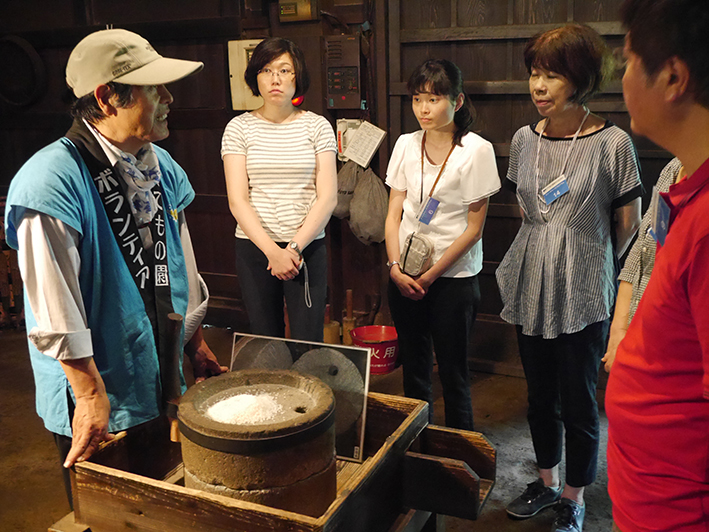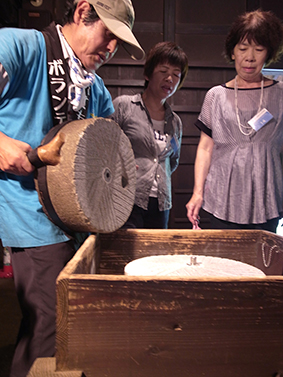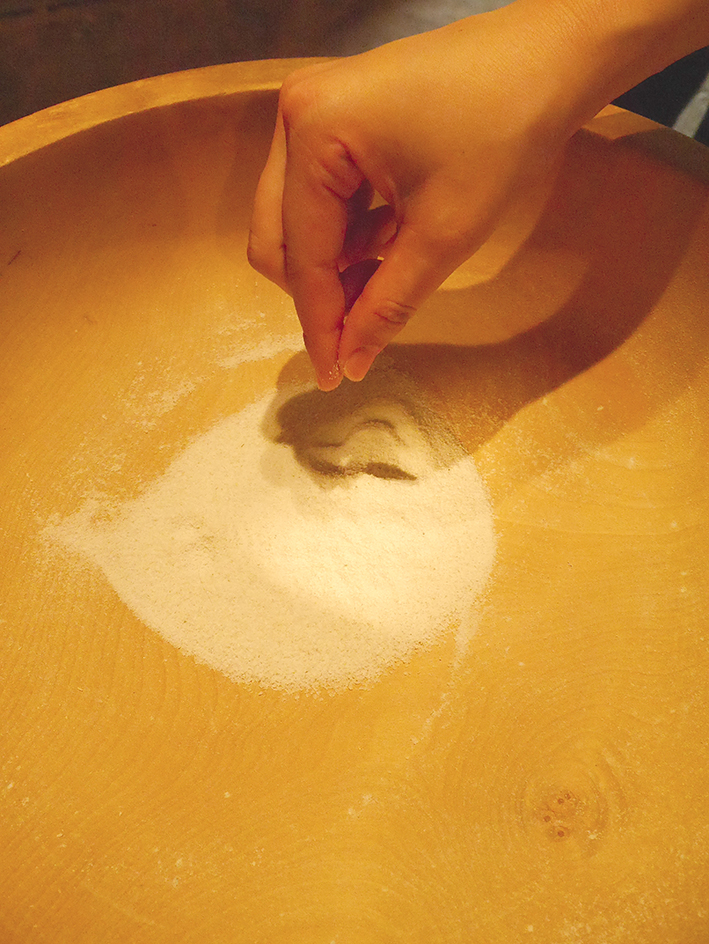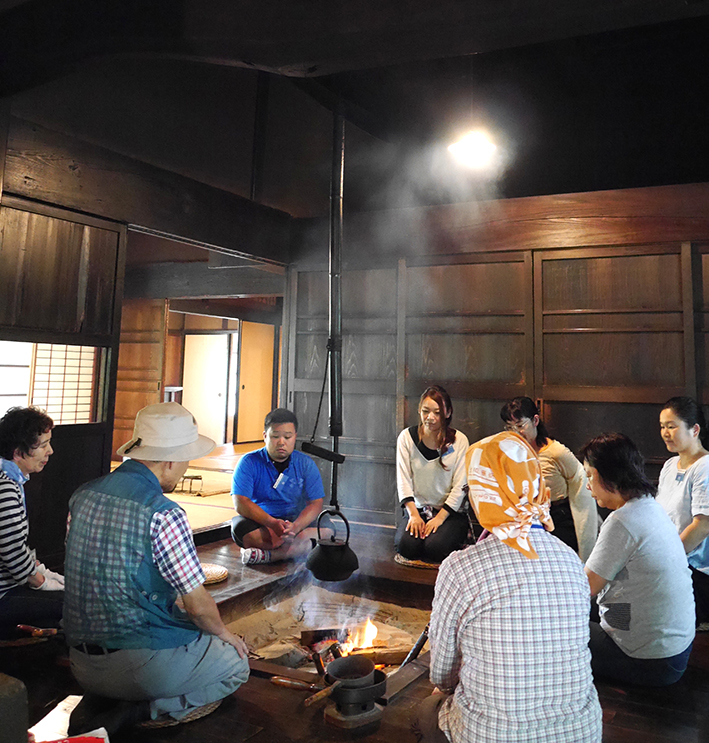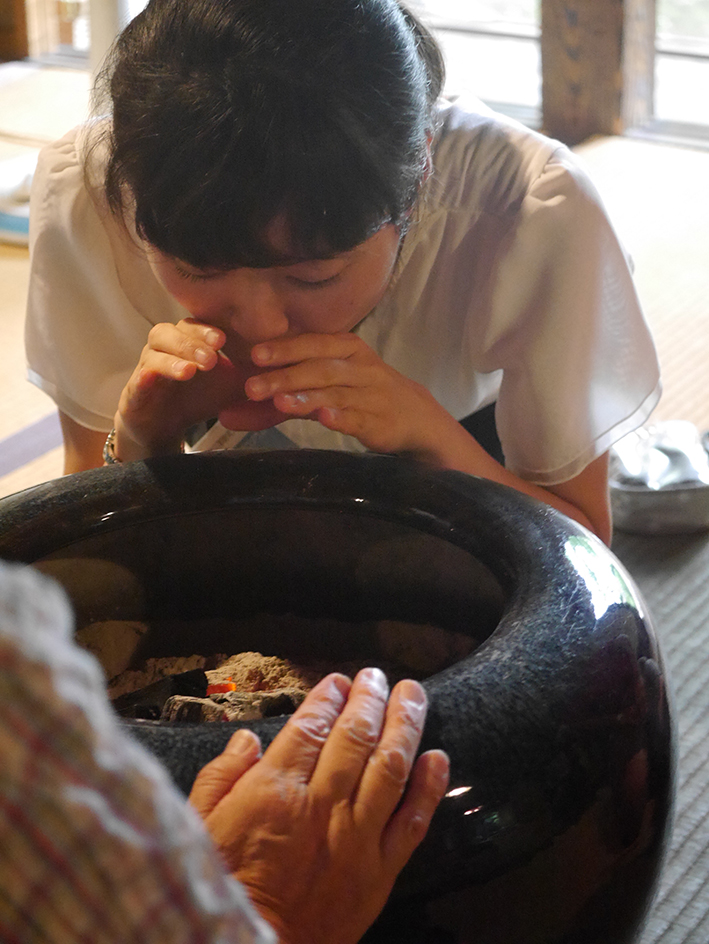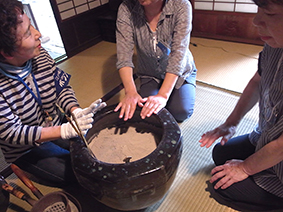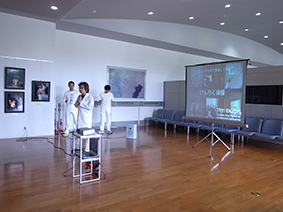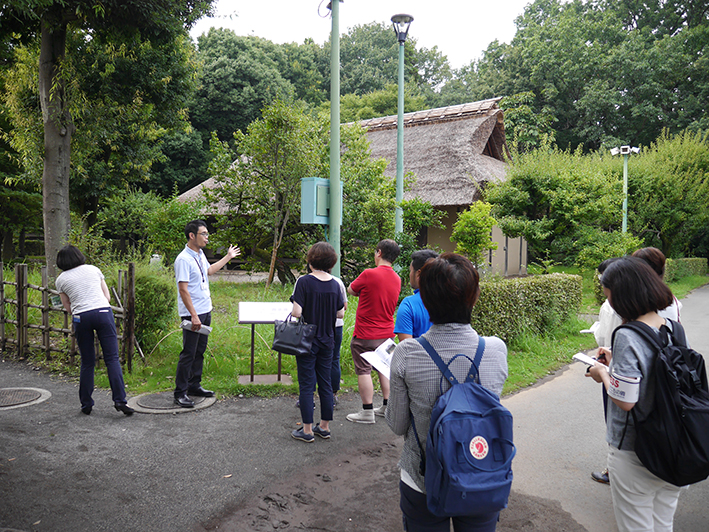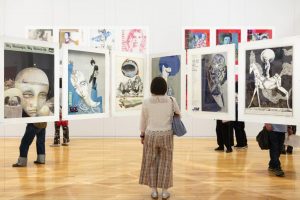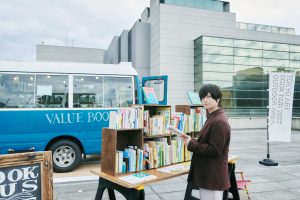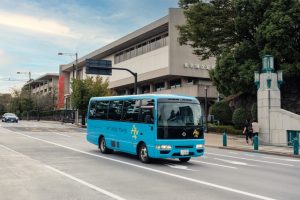On a weekday at the end of August, still very hot, some teachers gather at the Edo-Tokyo Open Air Architectural Museum. The program started off with greetings from a curator, Yuji Tanaka. He asks, “How many of you have been here before?” Yet, no one says yes. He then asks, “How about the Edo-Tokyo Museum at Ryogoku?” This time lots of hand shot up. The Edo-Tokyo Open Air Architectural Museum is a branch of the Edo-Tokyo Museum and is an open air museum preserving actual buildings. Tanaka moves on to explain about the museum.
“We have various restored buildings in different architectural styles from the Edo period to the early Showa era, including the Farmhouse of the Tenmyo Family, the public bathhouse “Kodakara-yu,” the bar “Kagiya” and the House of Kunio Mayekawa. In addition to these exhibits of restored buildings, there are special exhibitions showing the history of the buildings and events, such as letting visitors spend time feeling as if they were in downtown Edo in the evening or enjoying lit up buildings, as well as providing them with hands-on experience guided by traditional craftsmen.”


